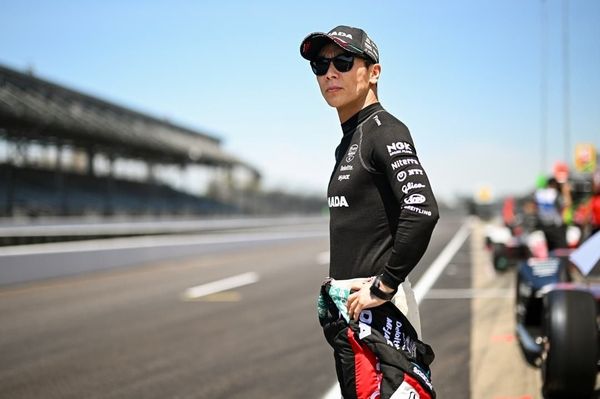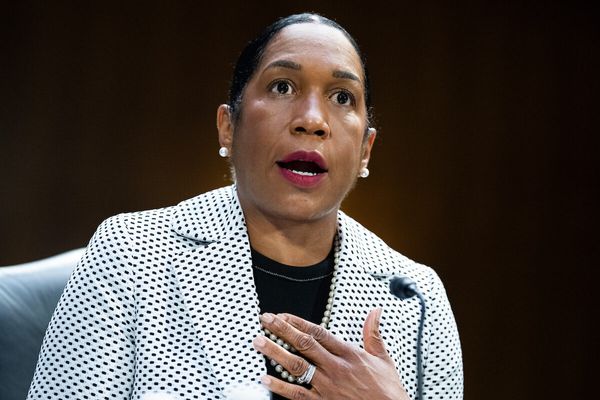
Wind turbines may pay the way for Nari Nari man Jamie Woods’ grand ambitions for his people.
“We’ve always said we want the destiny in our hands,” says Woods, the chair of the Nari Nari Tribal Council and land manager of Gayini, a vast property in south-western New South Wales that was returned to the NNTC in 2019.
Within Gayini’s rich landscape of biodiverse floodplains and Indigenous heritage, Woods envisages a cultural centre to train budding bush rangers. In surrounding regional towns, he speaks of Indigenous-led social programs to divert teenagers from entering the youth justice system, or to counter stubborn rates of suicide – particularly high among First Nations people.
Now, moving “at the pace of trust” with the windfarm developer Kilara Energy, Woods says the revenue from hosting turbines on the land may help those plans be fully realised.
“We have big ideas,” he says. “This industry will help us get there quicker.”
After years of negotiations, the NNTC has entered into an equity agreement with Kilara Energy, which is preparing an environmental impact statement of a 74-turbine windfarm on land that extends across Gayini’s southern boundary.
If the project is approved by the state government, like any landowner the NNTC would receive turbine rental payments, said to be about $40,000 per turbine annually. But unlike conventional agreements, the NNTC will also share a stake – and a say – in the development.
“We drew a line in the sand and decided we want to be in the driving seat for anything that is to be done on our managed lands,” Woods says.
It’s a novel partnership that, according to Andrew Thomson, the chief executive of Kilara Energy, will forge a pathway for First Nations co-ownership in Australia’s energy transition.
“We still have far too many disadvantaged Indigenous communities around Australia … when you look at health, housing, workforce participation, there’s still a big gap,” Thomson says. “The renewable sector, in my view, has an opportunity to help address some of that reality.”
‘Real economic benefits’
Prof Heidi Norman, a Gomeroi woman and researcher at the University of New South Wales, agrees. “Aboriginal people have never been big actors or beneficiaries, or been able to exercise agency,” she says. “Here is a new moment where … real economic benefits could be advanced.”
Unlike the mining and fossil fuel industries, which are geographically restricted, wind and solar farms are widely distributed across regional Australia. That means more First Nations groups have the opportunity to access the economic benefits of the energy transition, Norman says.
That doesn’t guarantee that all projects will get up.
“They say the time between the idea of a project and cutting the ribbon is the valley of death. Most projects in all likelihood will fall over,” Norman says. “We have to be realistic about what is possible.”
Commercial agreements between traditional owners and energy proponents are confidential and vary greatly depending on the development’s scale but can include rental or one off payments, co-ownership, employment and training opportunities or community benefit funds.
The latter is available to the wider community and standard practice in any renewable development. In the case of the Kilara Energy windfarm, Thomson says a portion of the community fund would be allocated to support local Aboriginal communities.
A complicating factor in these partnerships is the type of land tenure held by the First Nations peoples. As freehold owners of Gayini, the NNTC are in a strong position to negotiate. Other Indigenous groups may have weaker or no rights to negotiate, depending on whether they hold freehold land, exclusive possession native title, or a weaker form of native title. Those without recognised tenure have no legal rights to be consulted if projects are being developed on their country, beyond mandatory Aboriginal heritage surveys.
Ultimately, Norman says the principles of free, prior and informed consent must guide any partnership.
The First Nations Clean Energy Network was formed in 2021 and tracks renewable energy projects with First Nations ownership. Projects range from small renewable microgrids in remote Indigenous communities to large-scale projects, including a $3bn green hydrogen plant in Western Australia that is undergoing feasibility studies.
“We’re trying to lift the aspirations of our community about what we can expect from this industry,” says the network’s director, Yorta Yorta woman Karrina Nolan.
According to the climate change and energy minister, Chris Bowen, just 1% of renewable energy projects in Australia involve some form of First Nations equity. In Canada, considered the gold standard for First Nations participation in the transition, it’s one in five developments.
In June Bowen said the transition will have failed “if First Nations people aren’t at the centre of it”. Addressing the National Press Club this week, he said Indigenous participation “should be the norm, not the exception”.
Norman says the Albanese government is “playing catch-up” after a decade of climate inaction by the previous government. But with Indigenous engagement built into a raft of the government’s transition policies, including the draft First Nations clean energy strategy expected to be finalised by the end of the year, she expects this to accelerate.
Norman has also run workshops with Aboriginal land councils in NSW to discuss renewable energy opportunities in the region. She says there’s a “well-placed caution” about the industry among Indigenous leaders after decades of ad hoc Indigenous policy and “false horizons”.
“We have to go into this with our eyes wide open,” Norman says. “But the Canada experience shows us there is something here. I really think that this is a once in a many-generations opportunity.”







